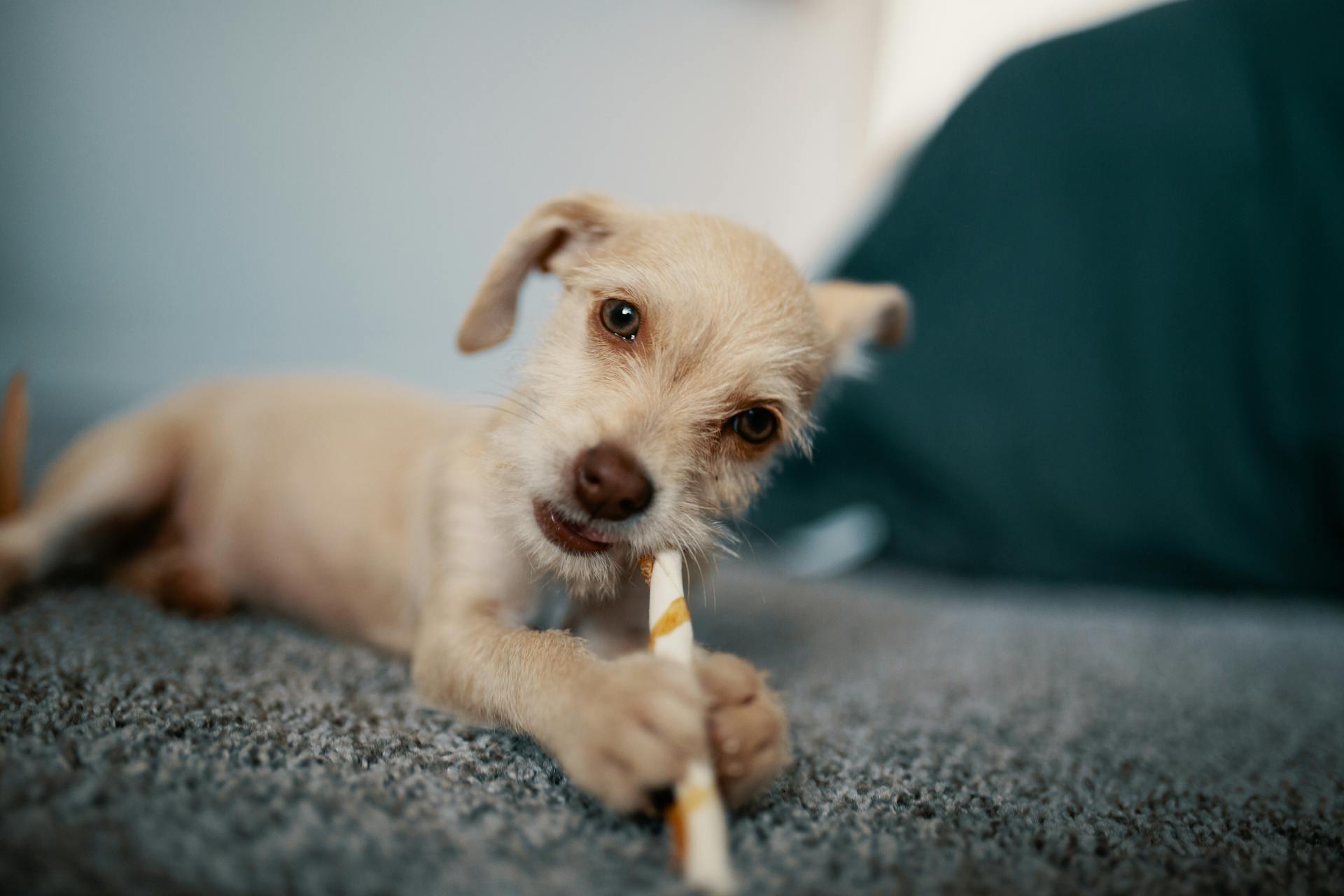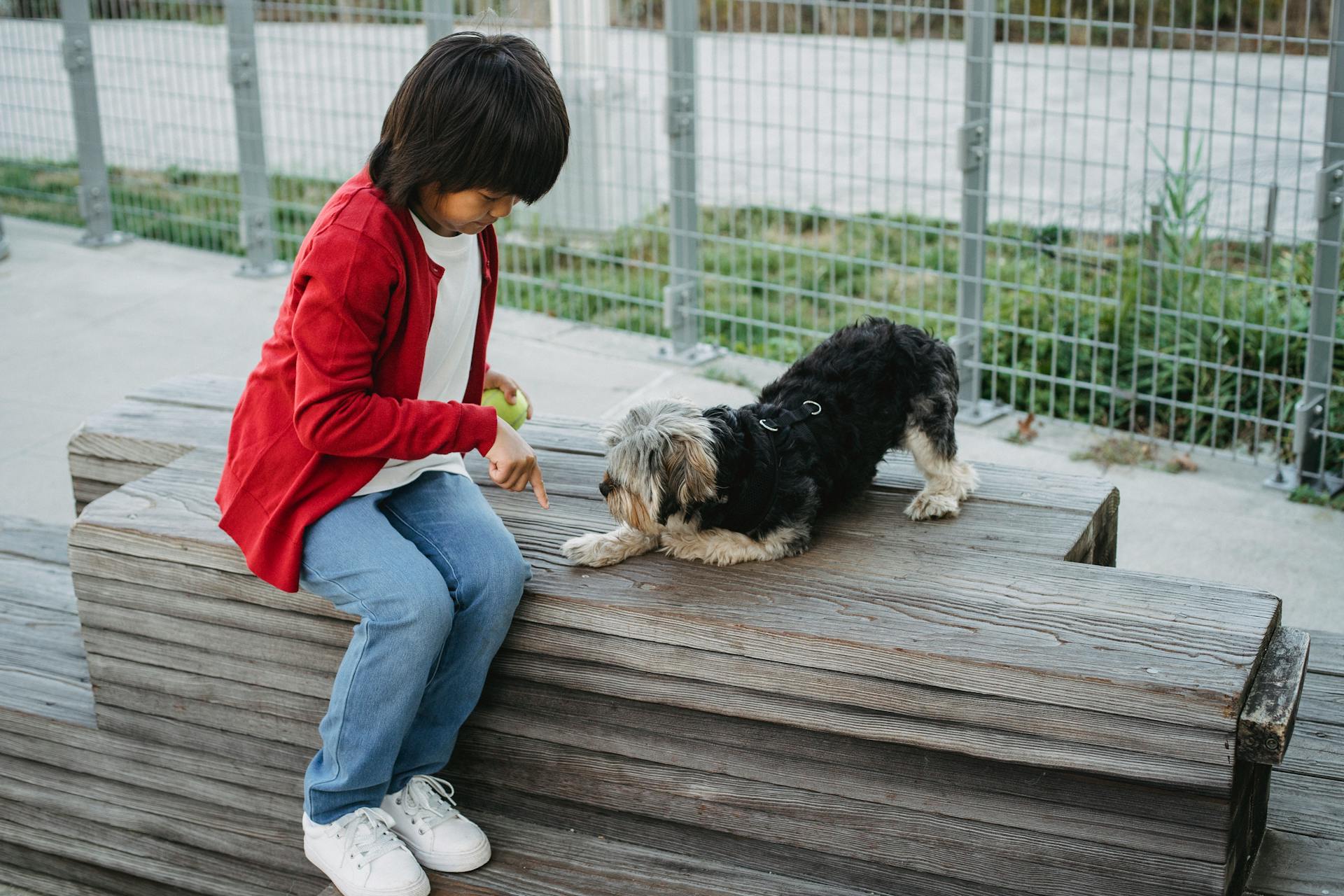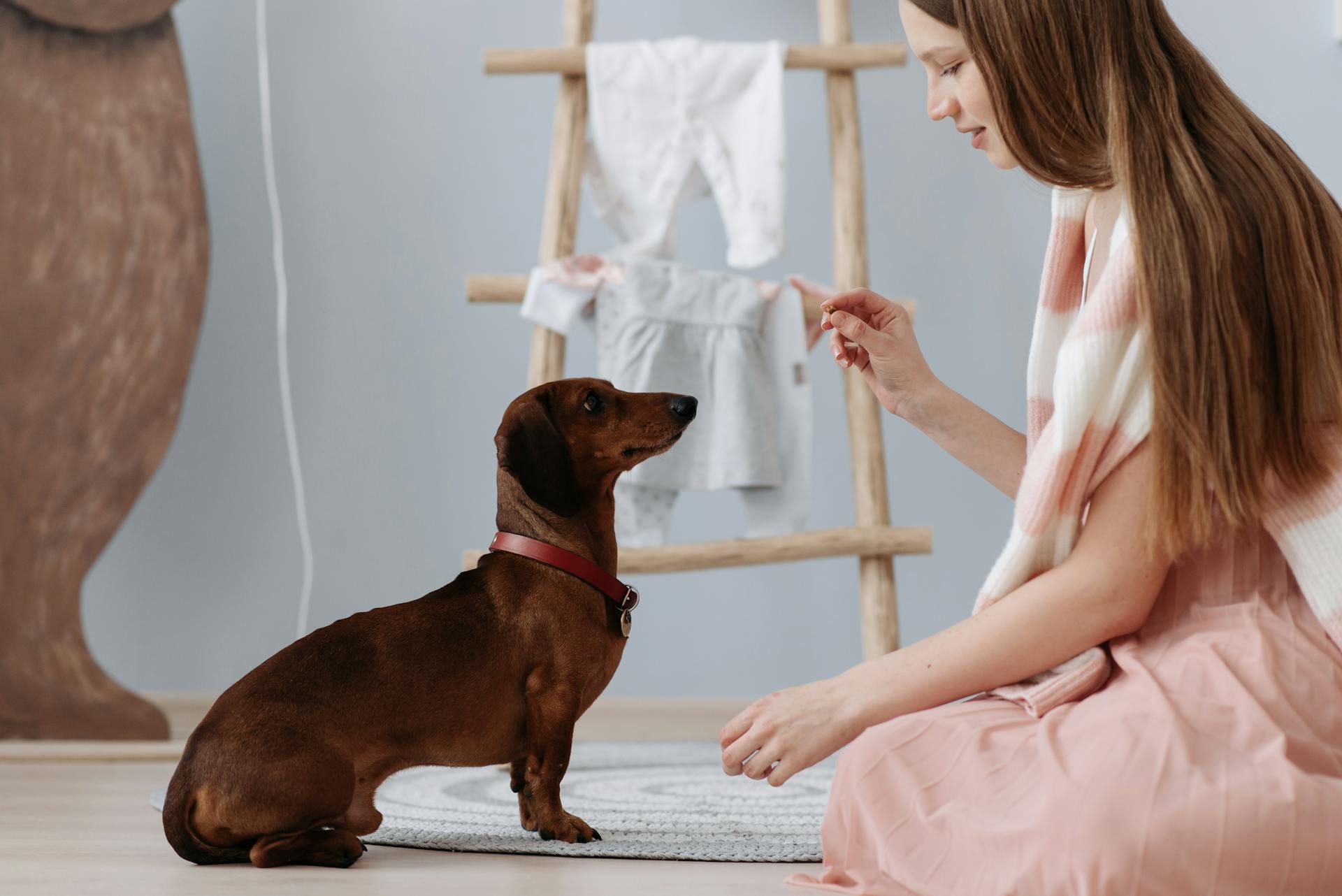
So, you're thinking of getting a dog potty training bell? First, understand that these bells are designed to help your dog communicate their need to go outside to you, making the potty training process much easier.
The first step in using a dog potty training bell is to choose the right one for your dog. With so many options available, it's essential to consider factors like durability and ease of use.
It's also crucial to establish a consistent routine and stick to it. This means taking your dog outside to the designated potty area immediately after meals, naps, and playtime.
By doing so, you'll be teaching your dog that these times are associated with going potty, making the process much smoother.
You might like: It's Your Choice Dog Training
Training Basics
To get started with training your dog to use a potty bell, you'll need a few simple things: a potty bell, a treat pouch, a supply of your pup's favorite treats, and patience. I've found that having all the necessary supplies on hand can make a big difference in the training process.
Expand your knowledge: Bell Training for Puppies
One benefit of bell training is that it gives your puppy a way to communicate his needs to you. This can be a game-changer for both you and your pup, making the whole potty training process much easier.
You'll need to hang the potty training bells at your dog's level on the wall next to the main "potty door." This will make it easy for your pup to ring the bells when he needs to go outside.
Before going outside, ring the potty bells yourself and say, "Go Potty." This will help your pup associate the sound of the bells with the action of going outside.
Here's a quick rundown of the basic steps involved in training your dog to use a potty bell:
- Hang the potty training bells at your dog's level on the wall next to the main "potty door."
- Ring the potty bells yourself and say, "Go Potty" before going outside.
- Take your puppy out on a leash to the same location every time.
- Repeat "Go Potty" and give your dog a treat when he finishes going to the bathroom outside.
It's also a good idea to start by showing your pup a treat before going outside, then slowly moving the treat next to the potty training bells to lure your dog to ring them. This will help your pup learn to associate the bells with the action of going outside.
On a similar theme: Dog Treat Training
Choosing the Right Approach
First, choose a potty bell that's small enough for your puppy to comfortably ring with their paw or nose.
It's essential to pick a bell that's loud enough for you to hear from another room, so you can respond quickly to your puppy's needs.
A pleasant sound is also crucial, as you'll be hearing it a lot, so select a bell that's music to your ears.
Do: Choose Wisely
When choosing a potty bell for your puppy, make sure it's small enough for them to comfortably ring it with their paw or nose. This is crucial for their ease and confidence.
A good potty bell should also be loud enough that you can hear it from another room. This will ensure you don't miss your puppy's signal.
Choose a bell with a pleasant sound, as you'll be hearing it a lot. A pleasant sound will make the experience more enjoyable for both you and your puppy.
If this caught your attention, see: Dog Training Sound
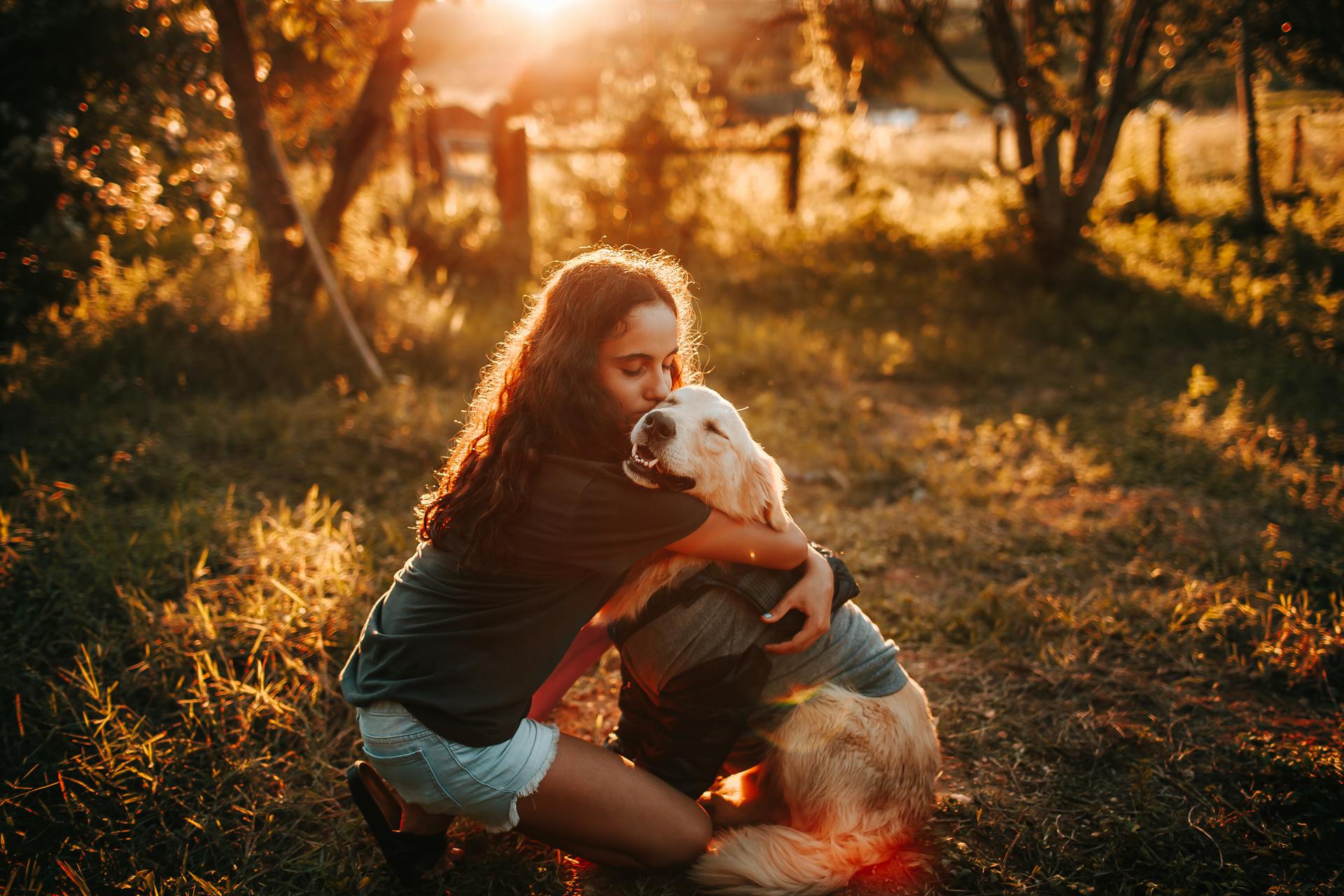
It's essential to select a bell that suits your puppy's needs and your household's dynamics. Consider factors like the size of your home, your puppy's size and breed, and your personal preferences.
A well-chosen potty bell will make a huge difference in your puppy's training and your life. It's worth taking the time to find the right one.
Relationship Building
Building a strong relationship with your dog is key to a happy and harmonious home. Having a shared language with your dog can decrease frustration in the house.
Most dogs catch onto ringing a bell or pushing a button to get access to going outside very quickly. This can be a game-changer for reducing accidents and stress.
A shared language can also help your dog to clearly communicate their needs with other people in your home. This is especially useful if you have a big household or if you're away from home for extended periods.
If you ever have a pet sitter staying at your home, a bell system can help your dog adjust better to you being away. They'll be able to communicate their core needs to their sitter, making the transition smoother for everyone.
For another approach, see: Sleep Away Dog Training
Reward Good Behavior
Rewarding good behavior is key to successful dog potty training with a bell. Give your puppy lots of praise and a treat every time they ring the bell. This positive reinforcement helps them associate good behavior with a reward. Praise and treats will make them more likely to continue ringing the bell in the future.
A different take: Is Petco Dog Training Good
Avoiding Mistakes
To avoid mistakes in dog potty training, consistency is key. You should ring the bell every single time you take your pup out, so he gets used to the routine.
Not taking your pup out often enough is another common mistake. Aim for at least 4-5 trips outside each day, and more if possible, to give your pup enough opportunities to practice ringing the bell.
Mistakes to Avoid
Don't be too hard on yourself if you make mistakes - it's all part of the learning process! Consistency is key when training your puppy to ring a bell, so make sure to ring it every single time you take him out.
Suggestion: Training Dog to Ring Bell to Go Out
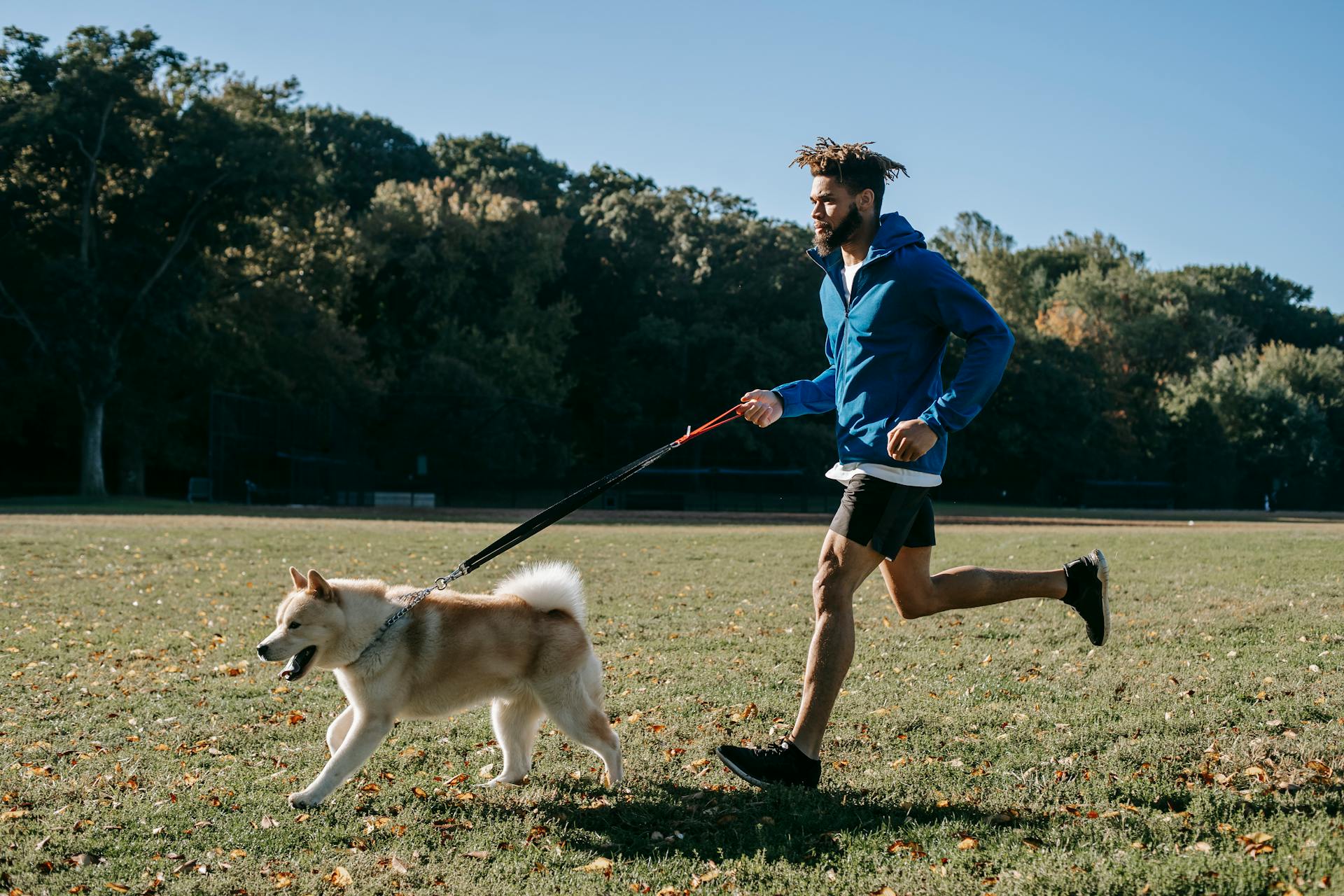
Forgetting to take your pup out often enough is another common mistake. Puppies need to go potty frequently throughout the day, so aim for at least 4-5 trips outside each day, and more if possible.
Getting frustrated is a big no-no - it'll only make things harder for your puppy to learn. They'll probably have accidents and may not ring the bell every time, but that's okay.
Additional reading: No Pull Dog Harness Training
The Look
Missing signals can lead to accidents, like when Clancy's owners missed his "The Look" signal.
Clancy, a 9-month-old Irish Setter, had a unique way of communicating his need to go potty: giving his owners a brief sideways glance toward the door, accompanied by a slight head-tilt.
Some dogs will bark, while others will whine or pace, but Clancy's owners needed to be aware of his specific signal to avoid accidents.
Options and Tools
You can give your dog the chance to communicate their need to go outside with a few different options. One of the easiest and cheapest options is to use bells hanging from the doorknob, or near the door.
Bells are convenient because they can be hung from almost any door handle and adjusted to work well as your puppy grows. They're durable, easy for puppies to learn to ring, and easy for you to hear even if you're in a different room.
Another option is to use receivers around your home so that when your dog pushes the doorbell by the door, you can hear it from anywhere in the house. This is a great way to stay connected with your dog and respond to their needs.
Talking buttons, like the ones popularized by Christina Hunger, are also an option. These recordable buttons can be used to teach your dog to talk and communicate their needs in a more complex way.
Curious to learn more? Check out: Are Goldendoodles Easy to Train
Frequently Asked Questions
How long does it take to bell train a puppy?
You can train your dog to use a potty bell in just two weeks, even if you're new to dog training. Learn how to effectively train your dog to use a potty bell in our comprehensive guide.
Do bells on the door work for dogs?
Yes, bells on the door can be an effective way to communicate with dogs, as they provide a clear and unmistakable signal that gets attention. This can be especially helpful for dogs that may not vocalize their needs or wait silently at the door.
How do you train a dog to use a smart bell?
To train a dog to use a smart bell, start by encouraging curiosity and rewarding them with treats for bumping the bell with their nose or paw. Begin by associating the bell with a command, such as "go outside," to create a positive association.
How to teach your dog to ring a bell for a treat?
To teach your dog to ring a bell for a treat, start by letting them sniff and lightly touch the bell, then reward with a treat when they do. If they're hesitant, try placing the bell on the ground and giving them time to become comfortable with it.
What can I use instead of a bell for potty training?
You can use the Paws2Go smart dog doorbell, which uses touch sensing technology for your dog to alert you when they need to go potty. This eliminates the need for traditional bells or scratching.
Sources
- https://www.lifewithdogs.tv/potty-bell-training/
- https://www.akc.org/expert-advice/training/teach-dog-ring-bell-go-outside/
- https://www.howtotrainadreamdog.com/dog-bell-training-in-3-easy-steps/
- https://walkandwagchapelhill.com/how-to-train-your-dog-to-use-a-potty-bell-in-just-two-weeks/
- https://petharmonytraining.com/whats-going-wrong-with-your-bell-training/
Featured Images: pexels.com
